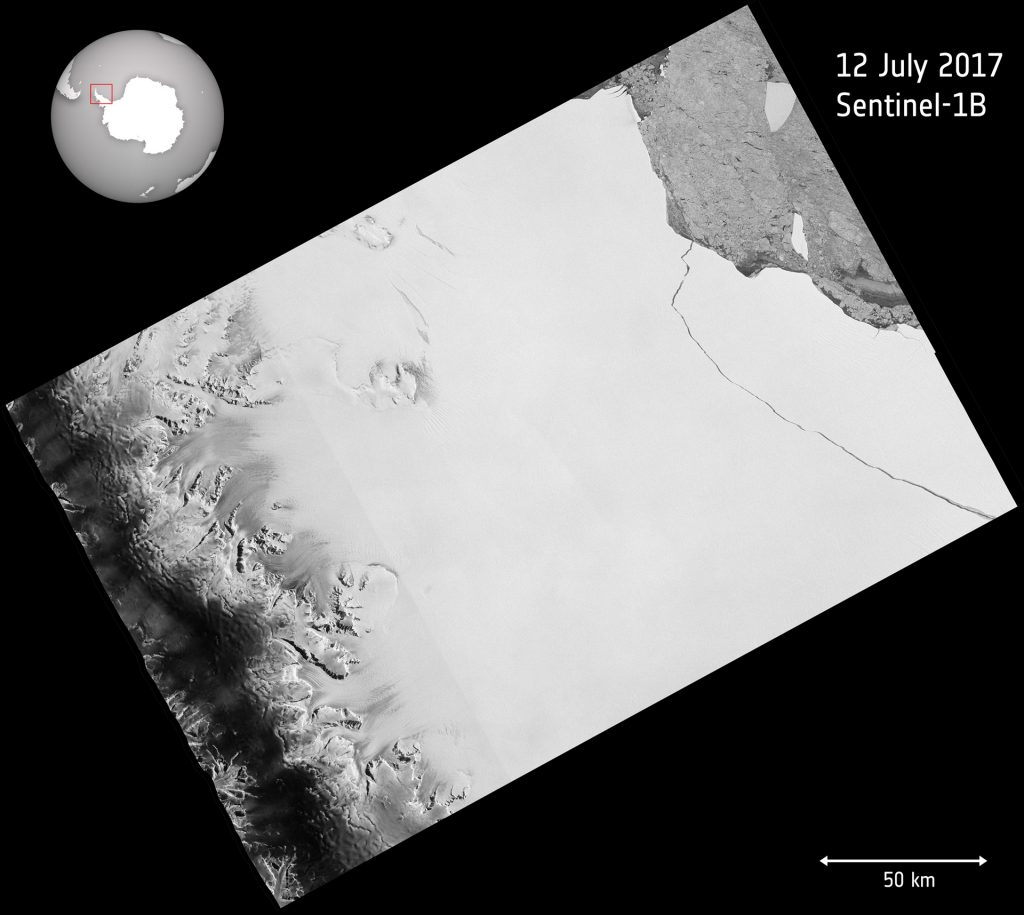Trillion Ton Iceberg
During my ongoing literature review I often discover interesting facts about things I’ve never thought about. Sometimes I can connect these facts with my own observations: The result is mostly a completely new idea why things are as they are. Maybe these ideas are new to you, too. Therefore I’ll share my new science based knowledge with you!
This week: This time, I think about the calving of a trillion ton iceberg-the largest iceberg ever recorded.
Scientific satellites looking down to our Earth have become more and more crucial tools to observe environmental changes, predict the weather, research inaccessible remote areas and monitor the effects of global warming. That way, research satellites were also monitoring the Larsen C Ice Shelf since a large fissure appeared several years ago.
The fissure seemed to be stable until 2016 when it begann to lengthen. In January 2017, the fissure expanded by 20 km and reached a total length of about 175 km. Over the subsequent months, the rift not only continued to extend but also started to grow and branched off towards the open water of the Weddell Sea. Finally, early July, only a few kilometers of ice separated the fissure’s end from the sea and indicated that the Larsen C Ice Shelf will calve a gigantic iceberg, soon.

Larsen C breaks – contains modified Copernicus Sentinel data (2017), processed by ESA
At some point between 10th July and 12th July 2017, the iceberg broke away from the Larsen C Ice Shelf and is now freely floating in the Weddell Sea. Due to the enormous size of the iceberg, the shape of the ice shelf as well as the entire Antarctic Peninsula was changed forever. The iceberg is as twice as large as Luxembourg (about 6000 sq km), contains the same amount of water as Lake Ontario in Northern America, reduced the area of the Larsen C Ice Shelf by 12% and weighs more then a trillion tons (1,000,000,000,000 metric tonnes).
Although this event is a part of the natural iceberg calving and scientists are not aware of a link to the human-made climate change, it puts the ice shelf into a vulnarable position. The ice front’s position is the furthest back in recorded history. Scientists will continue to watch for signs indicating that the rest of the ice shelf will become unstable, too.